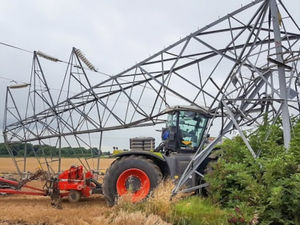Shropshire Farming Talk: Add value to your dairy herd
When an animal obtains a pedigree registration status, it means the relevant breed society has approved the animal’s purity (ancestry), traceability (unique ear tag number) and its authenticity to be true to the breed.
Registering your dairy herd delivers numerous advantages.
1. Full traceability of an animal’s ancestry through multiple generations.
2. Pedigree registration enables you to access vital genetic information on each animal e.g. production traits, pedigree index and PLI (Profitable Lifetime Index)
3. Ability to use other services including classification and genomic testing to help improve your herd.
4. Save time by applying for your cattle passports at the same as submitting the pedigree registration.
5. Cost-effective as the value of pedigree easily outweighs the registration fees.
6. More marketable progeny.
It is a great tool for maintaining animal records, marketing animals and learning about the animal’s potential and current performance. Registration of calves needs to be completed within 45 days of birth; Registration includes a pedigree certificate which provides the breeder with an official ancestry document.
From this verified data a farmer can make informed decisions to breed the right kind of stock to suit his or her system.
An efficient way to register pedigree female dairy cattle is using the Total Herd Recording Pedigree Package that the Cattle Information Service (CIS) offers. The package includes female calf registrations, BCMS passport applications along with regular milk recording.
The CIS Complete Pedigree Package offers all the above services with the addition of two inclusive Type Classification visits per year.
Both Pedigree Packages are charged as one monthly fee, spreading the costs over a 12- month period. The participating breeds for the Pedigree Packages are Holstein, British Friesian, Ayrshire, Jersey, Guernsey, and Brown Swiss.
A grading up procedure enables herds with non-pedigree animals to start the process to become pedigree. This is usually a straight-forward process which only takes three generations. All applications must be verified by official records.
A Field Officer from the relevant breed society, visits the farm and inspects the animals to check their ear tags correspond with their passport and milk record data and that there is no evidence of cross breeding. In areas of doubt the animal can be DNA/Genomic tested to establish parentage.
By Amanda Wilkes, CIS Area Manager for Shropshire





